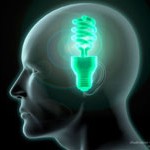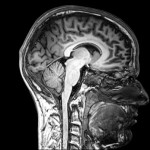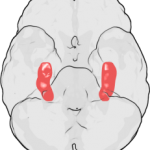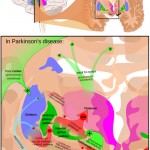q & a
Where is the seat of consciousness?
 Before addressing the “where” issue, we must first come up with a compelling definition fo “consciousness.” Whatever that definition may be, consciousness is not likely to have a clealry defined “seat” in the brain. It is likely to be a highly distributed phenomenon.
Before addressing the “where” issue, we must first come up with a compelling definition fo “consciousness.” Whatever that definition may be, consciousness is not likely to have a clealry defined “seat” in the brain. It is likely to be a highly distributed phenomenon.Click here to read
What kind of information can you get from MRI?
 MRI stands for Magnetic Resonance Imaging, which can denerate information about any organ of the body. Brain MRI can generate different kind of information depending on the protocol used. The most commonly reported information pertains to gross brain structure: Is there cortical atrophy? Are the ventricles abnormally dilated? Is there focal damage? Is there distributed small vessel disease? Otherprotocols (like Diffusion Tensor Imaging, DTI) cangenerate information about the condition of the white matter in the brain. MRIshould be distinguished frm...
MRI stands for Magnetic Resonance Imaging, which can denerate information about any organ of the body. Brain MRI can generate different kind of information depending on the protocol used. The most commonly reported information pertains to gross brain structure: Is there cortical atrophy? Are the ventricles abnormally dilated? Is there focal damage? Is there distributed small vessel disease? Otherprotocols (like Diffusion Tensor Imaging, DTI) cangenerate information about the condition of the white matter in the brain. MRIshould be distinguished frm...Click here to read
If somebody who was in a car accident has normal brain MRI, does it mean that everything is OK?
 Not necessarily. Subtle (or may be even not so subtle) cognitive impairment may persist despite the normal brain MRI.So the notion the MRI can be used to “rule out” long-term consequences of traumatic brain injury is flawed. MRI is a very useful way of characterizing the condition of one’s brain, but it is not the only one and not the definitive one.
Not necessarily. Subtle (or may be even not so subtle) cognitive impairment may persist despite the normal brain MRI.So the notion the MRI can be used to “rule out” long-term consequences of traumatic brain injury is flawed. MRI is a very useful way of characterizing the condition of one’s brain, but it is not the only one and not the definitive one.Click here to read
Why does hypoxia often result in memory impairment?
 Hypoxia involves transient oxygen deprivation of the brain. So it stands to reason that the more oxygen-consuming certain aprts of the brain are, the more susceptible they will be ot the effects of hypoxia. Hippocampi are known to be particularly oxygen-dependent, and hippocampi are also critical for memory. Hippocampal damage due to any cause is likely to result in memory impairment
Hypoxia involves transient oxygen deprivation of the brain. So it stands to reason that the more oxygen-consuming certain aprts of the brain are, the more susceptible they will be ot the effects of hypoxia. Hippocampi are known to be particularly oxygen-dependent, and hippocampi are also critical for memory. Hippocampal damage due to any cause is likely to result in memory impairmentClick here to read
Is it true that cognition is also impaired in Parkinson’s disease, and not just movements?
 Yes, it is often true. The exact prevalence of cognitive impairment in Parkinson’s disease (PD)is estimated differently by different authors, but it is relatively common. This is not surprising for two reasons; (1) substantia nigra (SN), the nucleus most affected in PD projects into the striatum which plays a role in the so-called “executive functions,” and (b) more recent research has shown that the ventral tegmental area (VTA) is also affected in PD.Since VTA projects directly into the frontal lobes,...
Yes, it is often true. The exact prevalence of cognitive impairment in Parkinson’s disease (PD)is estimated differently by different authors, but it is relatively common. This is not surprising for two reasons; (1) substantia nigra (SN), the nucleus most affected in PD projects into the striatum which plays a role in the so-called “executive functions,” and (b) more recent research has shown that the ventral tegmental area (VTA) is also affected in PD.Since VTA projects directly into the frontal lobes,...Click here to read
Is it true that the left hemisphere is “rational” and the right hemisphere is “emotional”?
 No, it is not. This notion has gained popularity in “tabloid science”, but it is too simplistic, as is another notionclaiming tatthe neocortexis “rational” and the limbic structures are “emotional.” Both hemispheres participate in emotional regulation, and so do both the neocortex and the limbic structures.
No, it is not. This notion has gained popularity in “tabloid science”, but it is too simplistic, as is another notionclaiming tatthe neocortexis “rational” and the limbic structures are “emotional.” Both hemispheres participate in emotional regulation, and so do both the neocortex and the limbic structures.Click here to read
What is dyslexia?
 Dyslexia is generic term referring to several kinds of difficulties of processing written language (both reading and writing). It is important to realize that most types of dyslexias are secondary to spoken language impairment. So-called “phonological dyslexia” is the most common type, secondary to poor ability to process “phonemes,” which are the smallest linguistically salient units of language. But other types of dyslexia also exist and should not be overlooked.
Dyslexia is generic term referring to several kinds of difficulties of processing written language (both reading and writing). It is important to realize that most types of dyslexias are secondary to spoken language impairment. So-called “phonological dyslexia” is the most common type, secondary to poor ability to process “phonemes,” which are the smallest linguistically salient units of language. But other types of dyslexia also exist and should not be overlooked.Click here to read









